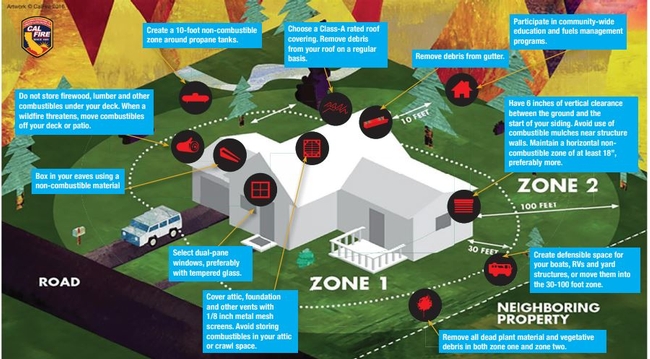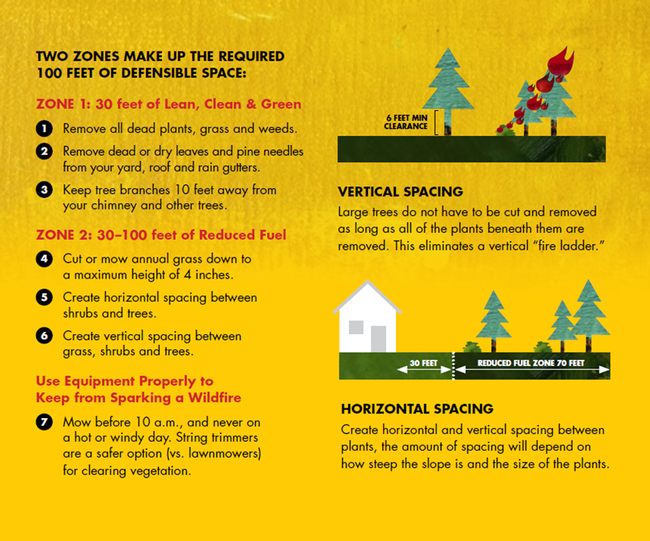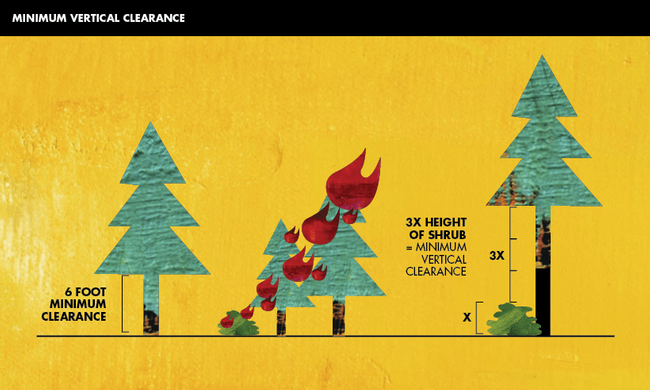- (Focus Area) Environment
- Author: Phil McRea, Master Gardener
- Contributor: Karen Giovannini
Updated links and republished Oct 2019.
Many residents in Sonoma County live in or near fire danger. For those who do live in a high fire area, knowing what to do when conditions are ideal for a forest (or urban fire) is essential.
Red Flag Warning
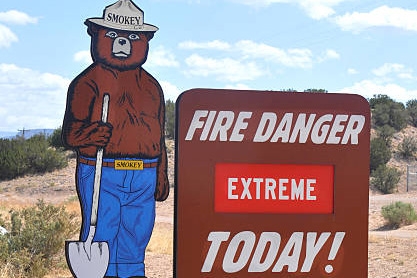
- Sustained wind speeds averaging 15 mph or greater
- Relative humidity 25% or less
- Temperature over 75 degrees F
Fuel Moisture Index
The fuel moisture index is a tool used to understand fire potential. 10-hour fuel moisture also known as Dead Fuel Moisture; when fuel moisture is <30%, it is essentially considered dead. 10-hour fuel moisture applies to grasses and bushes up to 1 inch in diameter. Learn more at NOAA.
The US National Weather Service warning is to inform area fire fighters and land management agencies that conditions are ideal for wild-land fire combustion. Cal Fire and local fire agencies all go on a high alert status under these conditions.
The Wind Cries...Santa Ana or Diablo?
The Santa Ana and Diablo winds occur throughout the year, but are extremely dangerous during dry periods (which, in Southern CA is practically year round). Santa Ana occurs in Southern CA, Diablo in the north. Winds come from the east from hot surfaces (deserts) and are compressed and speed up as they head towards the ocean. Learn more from SFSU. Check out current wind conditions at Windy.com.
Be Prepared
Here are some things you can do when Red Flag Warnings are issued. State and local news agencies usually announce Red Flag Warning 24-48 hours in advance on TV and radio, so there is time to act on short-term fixes.
During Fire Season
- Make sure garden hoses are hooked up and ready to use with spray nozzles attached; best practice is to never leave a garden hose randomly piled up as it will always tangle – if you want it coiled, coil it in equal sized oval loops with each successive loop offset few inches in the same direction.
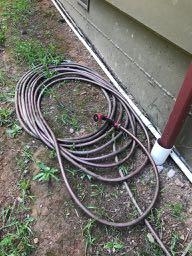 Garden hose ready to use
Garden hose ready to use - All portable propane tanks (BBQ, smoker, etc.) should be turned off and moved away from your house.
- If you have a pool: in an emergency, a pressure washer can be used to pump water from your pool and should be left in an available location; fire fighters should have clear access to your pool.
- Decks should be cleared above and below of flammable objects.
- Gas cans – for lawn mowers, chippers, whatever – should be moved away from house or garage/barn.
- Cover firewood stacks next to house with a fire resistant cover.
- Make sure cell phones are charged and ready for alerts and within hearing at all times.
- Close exterior doors and windows. Leave doors unlocked. Leave lights on inside and outside of house.
- If you have a ladder, leave it available outside, next to the house, in case fire fighters need to access roof.
- Have all your evacuation supplies such as flashlights and a good portable radio ready to go.
- Make sure your cars have plenty of gas and are parked outside, or garage door is capable of manual operation and all capable family members know how to open it.
- If appropriate, shut off gas supply line at the meter.
Ongoing Preparations
- Make an evacuation plan and collect all necessary supplies.
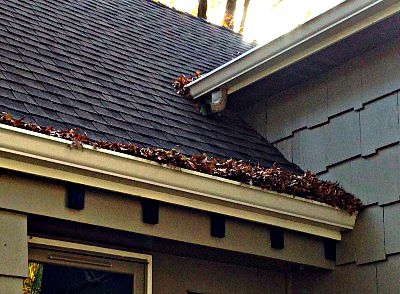 This gutter needs some cleaning
This gutter needs some cleaning - Clean gutters and roof debris regularly.
- Where possible, install mesh screening under decks to prevent burning material from blowing.
- Move firewood piles away from house.
- If you have a pool, research the special pump systems that are available for fire fighting.
- For more information obtain a free brochure: “Living with Fire in Sonoma County” from fire agencies of Sonoma County.
Learn more about disaster preparation and recovery on Disaster Recovery Resources.
- Author: Steven M. Worker
- Editor: Karen Giovannini
On April 13, 2019, 28 4-H members and volunteers from Sonoma, Marin, Napa and Alameda counties convened with Cooperative Extension staff at the Las Posadas 4-H Camp for the 2019 4-H Environmental Science Institute. The purpose was to improve the competence and confidence of youth 4-H camp staff (affectionately called staffers), and their adult coaches, to facilitate high quality outdoor environmental education during their 4-H camp.
The goal was to help staffers be able to use best practices in hands-on environmental education, improve their content knowledge of a nature subject, and then lead environmental education short courses/education/adventure time sessions during their 4-H camp.
Marisa Coyne, Volunteer Engagement Coordinator for Statewide Master Gardeners, facilitated a session on best practices in outdoor environmental experiential education. Maggie Gunn, 4-H Youth Development Advisor in San Mateo and San Francisco, lead a workshop on the ecologies of Las Posadas including a flower exploration hike. Steven Swain, Environmental Horticulture Advisor in Marin, lead a workshop on animal commutes and tracking animal movement and behavior in the forest, chaparral, and riparian zones. Michael Jones, Forestry Advisor in Mendocino, Lake, and Sonoma counties led a workshop on forests and insects.
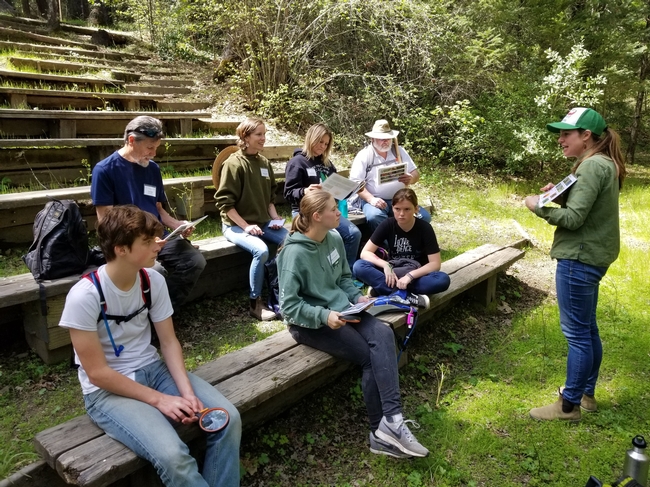
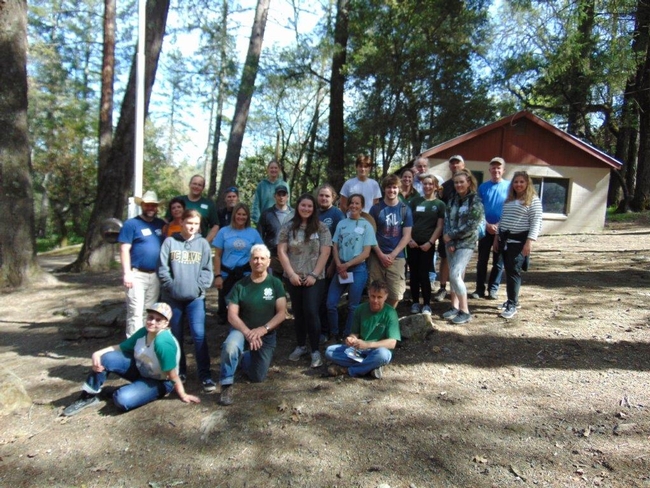
- Author: Stephanie Larson
- Author: John Gorman
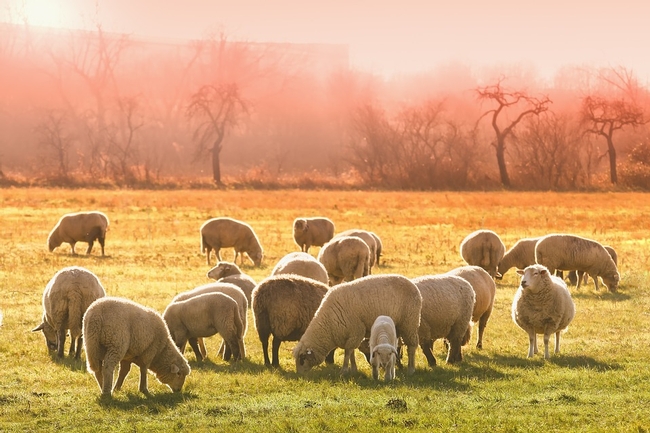
Along with prescribed fire, grazing of domestic livestock may be the earliest vegetation management tool employed by humans. We suggest that the challenges of vegetation management on working landscapes may be addressed with the careful sharpening of this old tool. Prescription grazing is the application of livestock grazing at a specified season, duration and intensity to accomplish specific vegetation management goals. Controlled grazing of this type is being employed throughout California on public and private land and is proving to be a promising tool in reducing the fire fuels and unwanted, excessive vegetation.
Furthermore, livestock grazing has one distinct advantage over other control methods; in the process of controlling an undesirable plant, grazing animals convert it into a saleable product.
Steps in Developing a Grazing Prescription
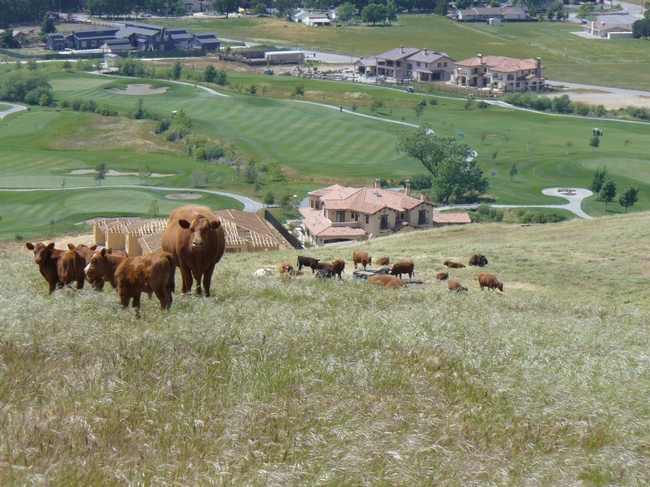
Selecting the Right Species
The species of livestock best suited for the specific vegetation management goals depends on both the plant species of concern and the production setting. Cattle have large rumens that are well adapted to ferment fibrous material and are classified as grass and roughage eaters. They are therefore generally superior to goats or sheep to manage fibrous herbaceous vegetation such as dormant grasses. Goats have narrow and strong mouths well designed for stripping individual leaves from woody stems and for chewing branches. Goats also have a large liver mass relative to cattle or sheep and may therefore more efficiently process plants that contain secondary compounds such as tannins or terpenes. Sheep are generally considered an excellent species to accomplish control of herbaceous weeds. Sheep possess a narrow muzzle and a relatively large rumen per unit body mass. These characteristics allow them to selectively graze and yet tolerate substantial fiber content, and results in diets generally dominated by forbs. Sheep are also small, sure-footed, and well suited for travel in rough topography which may not be easily accessible for chemical weed control.
Grazing Workshops for Working Landscapes in Sonoma & Marin Counties
Creating resiliency in the rural landscape of Sonoma and Marin Counties is critical in preparing for the next natural disaster, managing biodiversity or achieving ecosystem service goals such as carbon sequestration, wildlife habitat and viewsheds. This growing recognition of the ecological benefits livestock grazing is important to our County's resiliency. However, grazing can be difficult to landowners that have never grazed their properties before. UC Cooperative Extension will hold several workshops on prescriptive grazing techniques to address the sustainability of our working landscapes while reducing the vegetation that leads to catastrophic wild fires. Private land owners manage the majority of the open spaces in Sonoma and Marin Counties and these workshops are aimed at those private citizens and other public land owners that are interested in using grazing as a vegetation management tool. Increasing the number of agriculture land grazed will benefit both public and private open space and the residents that benefit from them. The goal of the workshops is to increase understanding, interest and acceptance of using grazing as a vegetation management tool. Upcoming workshop held at SRJC Shone Farm: 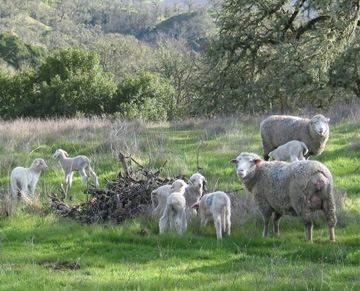
DAY 1 – FRIDAY, May 17 (8:30 am - 7pm)
- Setting Achievable Grazing Goals
- Basic Principles of Managed Grazing
- Animal Nutrition, Body Condition Scoring
- Selecting the right grazer
- Animal Husbandry Basics
- Grazing 101
- Electric Fencing
- Drought & Flood Management
DAY 2 – SATURDAY, May 18 (8: 00 am - 5 pm)
- Graze Planning
- Infrastructure
- Pasture & Range Ecology
- Livestock Protection Tools
- Health Issues-Parasite Control
- Livestock Economics, Leasing
- Carbon Plan
- Monitoring, meeting grazing goals
Register online for
Grazing School for Vegetation Management & Wildfire Vegetation Reduction.
Sonoma and Marin County's working landscapes, properly managed with prescription grazing, could prove to be a winning solution for all parties involved. Grazing not only provides a service to land owners and managers that may not be easily achieved in other ways, but it can also provide an income stream to aspiring livestock grazers just starting their grazing businesses. These workshops will provide educational opportunities for all parties to learn the “how to” in grazing, landowners who what to graze themselves, landowners who want to hire grazes and grazers who are looking to start or increase their grazing business enterprise. Let's work together to sharpen the “old” tool of “livestock grazing” into the “new vegetation management tool” for working landscapes.
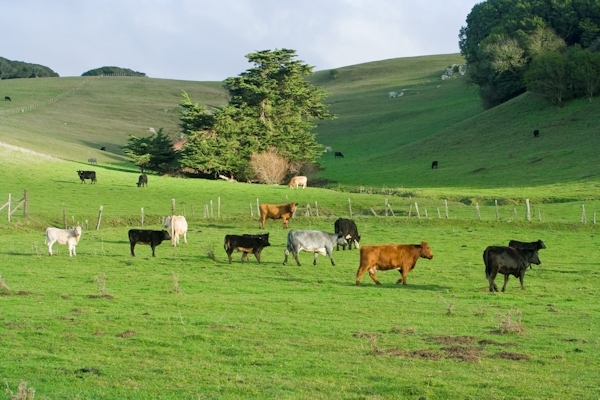
- Author: Michelle Nozzari
- Author: Karen Giovannini
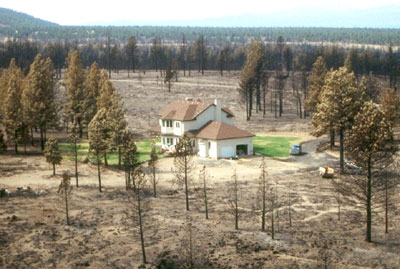
UCCE Sonoma is committed to building climate resilient communities and ecosystems. Through our educational outreach and workshops on the better land and natural resource management practices. We are working to make sure that homeowners, landowners, farmers, and ranchers across California are better prepared and able to deal with the growing risk of fire, drought, and flood hazards in Sonoma County.
Protecting California's Economy & Natural Resources
UCCE Sonoma is working to return prescribed burning and grazing to land critical in preventing devastating wildfires. Rapid population growth in Sonoma County has led to an increase in housing development in Wildland Urban Interface (WUI), urban communities adjacent to wildlands. Prescribed fire helps to protect critical infrastructure and resources like the Lake Sonoma watershed, bay area air quality, soil health and plant habitat by addressing fire fuels before peak fire season conditions occur.
Returning the Legacy of Safe Fire
Abatement of Hazardous Vegetation & Combustible Materials in Sonoma CountyThis spring, in the interest of having fire safe communities, the Fire Prevention Division of Permit Sonoma is starting an inspection program on parcels 5 acres or LESS in the unincorporated county. Permit Sonoma is working with local fire protection districts to conduct the inspections. Learn more at Sonoma County Code Ordinance Chapter 13A “Abatement of Hazardous Vegetation and Combustible Materials” |
Development in the WUI has halted the important indigenous legacy of facilitated burning that shaped Sonoma County's fire adapted ecosystem leading to a build up fire fuels in the wildlands. UCCE Sonoma has hosted and continues to educate the public through a series of workshops covering best practices for home hardening, prescribed burn, grazing, and other vegetation management tools. TheGood Fire Alliance (GFA) is a Sonoma County community based group that has formed to learn about and receive hands-on training on the best practices for fire fuel reduction, vegetation management, smoke management, home hardening, shaded fuel breaks, prescribed burning and grazing, etc.
For more information visit: Prescribed Burns Fact Sheet
Disaster Recovery Resources
In response to devastating October 2017 wildfires, UCCE Sonoma has compiled a compressive list of online resources for home owners and land across California living in high fire hazard prone areas. Disaster Recovery Resources includes information about how to prepare for a disaster, what to do after a fire, clean-up, food safety, erosion, and restoring and rebuilding homes .
For more information visit: Disaster Recovery Resources.
Upcoming Workshops
- Ongoing Master Gardener Firewise Landscaping workshops
- April 27 Post-Fire Food Safety Workshop
- April 27-28 Wildland Firefighter Training for Rx Burn Practitioners hosted by Audubon Canyon Ranch
- May 4 Shaded Fuel Break Workshop with Audobon Canyon Ranch and The Wildlands Conservancy
- May 17-18 Grazing School for Wildfire Vegetation Reduction
Home Hardening
Vegetation Management Requirements & Recommendations
- Author: Mimi Enright
- Contributor: Julia Van Soelen Kim
- Contributor: Vanessa Raditz
- Contributor: Suzi Grady
“Produce Safety After Urban Wildfire” citizen science project
The Northern California fires of October 2017 created poor air quality and distributed toxic air contaminants over the region. Following the fires and the incredible response from local farmers, UCCE Sonoma County embarked on a “Produce Safety After Urban Wildfire” citizen science project to help answer community concerns about whether the safety of local produce might have been impacted by contaminants carried in the smoke and ash from the fire. 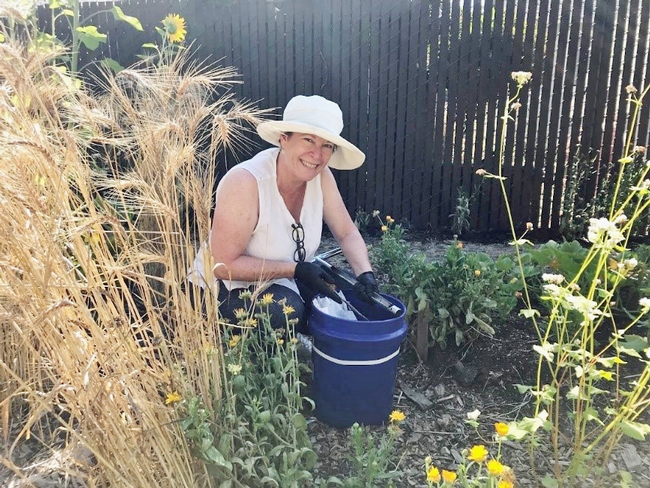
With the support of UCCE Sonoma, community members concerned about the impact of toxic smoke on local produce and UCCE Master Gardeners took over 200 samples of leafy greens from 25 gardens and farms across Sonoma County in the immediate aftermath of the fires; in the summer of 2018 the team took soil samples from five of the original sites sampled. Using funding from University of California Agriculture & Natural Resources Division and the Bay Area Air Quality Management District, we had produce and soil samples from five sites most likely to have received deposits of toxic air contaminants from the urban wildfire tested for heavy metals, dioxins and polycyclic aromatic hydrocarbons.
Results
Based on preliminary findings, we hypothesize that produce safety was not significantly affected by the fires and may be mitigated by washing produce. Preliminary analysis was inconclusive but did not indicate a high degree of contamination. Polycyclic aromatic hydrocarbons were inconclusive due to high method reporting limits from our laboratories. Heavy metals were of low concern, with no detection of lead, arsenic, or mercury. Nickel was found in 2 of 8 samples at levels exceeding Proposition 65's No Significant Risk Level but which may be mitigated by washing produce. Dioxins were of some concern with concentrations found above background levels from FDA's Dioxin Monitoring Program, but below NSRL. 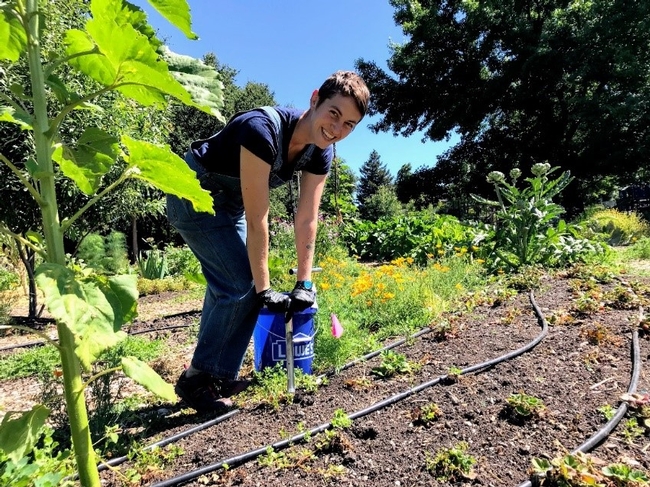
Findings/Observations
- It is important to note that over long periods of time, exposure to these chemical groups at very low levels can still contribute to health impacts, including at levels below what our tests are able to detect.
- Numerous health benefits including cancer risk reduction have been attributed to green leafy vegetables. These benefits may outweigh the additional risk from trace contaminants detected in some produce in this study. Quantitative comparisons will be provided in our final report.
- Some individuals have higher risks and may want to be in communication with their healthcare provider to better understand if they should take extra precautions. Individuals at higher risk may also benefit greatly from the high nutrition in green leafy vegetables and fresh produce.
- Best practices for reducing risk include: wearing a respirator mask during poor air quality; washing produce thoroughly in running water; peeling root vegetables, testing soil regularly; containing and amending contaminated soil through sheet mulching, raised beds, and compost.
- Best practices that enhance protective factors and should also be pursued, such as increasing produce consumption to promote healthy nutrition, improve immunity, and support resilience to chemical exposures.
What's Next
Over the next few months, we will be completing our final report and creating additional tools for communicating these results to concerned community members. In the Spring of 2019, we will be conducting community workshops. Reports, handouts, workshop materials, and the protocols from the study will be made publicly available for use by communities experiencing wildfire in the future.



